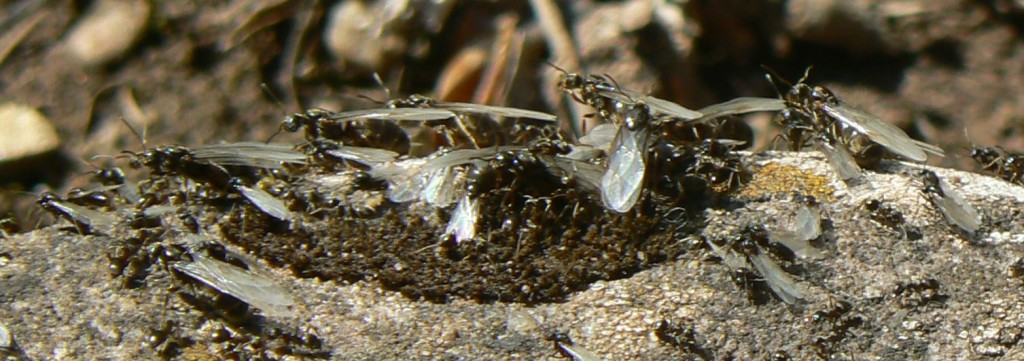
[197] Lasius niger, Black Ants
Introduction
Lasius niger, which may be called the Common Black Ant or Black Garden Ant, is by far the most common and widespread species of ant in the towns of Britain. I will also briefly consider up to a hundred other species of ant found in the UK.
There are about 20 000 species of insects called ants within the family Formicidae.
Taxonomy
Kingdom – Animals
Phylum – Arthropods
Class – Insects
Order – Hymenoptera
Suborder – Apocrita (Bees, Wasps and Ants)
Infraorder – Aculeata (Bees, Ants and stinging Wasps)
Superfamily – Formicoidea (Just Formicidae)
Family – Formicidae (Ants)
Subfamily – Formicinae
Tribe – Lasiini
Genus – Lasius
Scientific Name – Lasius niger
See text for other species.
Name
Ant comes from old Germanic roots, probably originally meaning ‘biter.’
Lasius is Modern Latin from the Ancient Greek lasios meaning shaggy. Niger, of course, means black.
Formica, which defines the name of the family Formicidae, is the Latin for an ant.
Ants
In [036] Arge pagana, we saw that taxonomically we divide Hymenoptera into Symphyta (Sawflies and others) and Apocrita (Bees, Wasps and Ants.) Well, it gets more complicated with the 150 000 species of Apocrita. It’s best just to accept that its complicated and that technically bees and ants are just specialized wasps. The biological definition of a wasp is very wide and includes much, much more than the common insects that Americans call yellowjackets.
Physically ants are easily recognizable by their long, slender, nodular ‘waists.’ I can’t say I have ever noticed their elbowed antennae but Wikipedia assure me that this is another useful recognition feature.
I have put the word ‘Ants’ in the title in the plural because they are very much a social animal. They form colonies and you have virtually no chance of ever seeing a single ant on its own. In many ways the colony acts as a superorganism.
You will have some idea of insect colonies and castes from [029 Honey Bee.
As well as the queen, workers and drones, ants may have one or more other castes. Many have soldier ants, which are larger and fiercer, acting to defend the colony.
Ants use the same haploid sex-determination system as bees.
Eggs develop into larvae, which are looked after and fed by adult worker ants. (The worker regurgitates liquid food from its crop.) Workers also look after the pupae and emerging imago stage. (See below.)
The queen, generally much larger than workers, can live for thirty years, spending all of her time laying eggs.
Description
Lasius niger ants are small and glossy black.
Their underground colonies have typically four to seven thousand ants, possibly up to 40 000. Colonies only have one queen. There is no soldier caste. Most of the time only workers are produced.
A new generation emerges every year and at the right time thousands of winged queens and male drones emerge from the colony, assisted by workers. All the local colonies pick the same day, generally a hot sunny day in July or August. (Sometimes there may be two or more days and there is some variation across the country.)
Emerging queens are much large than the workers and may have lighter brown bodies. The males are significantly smaller.

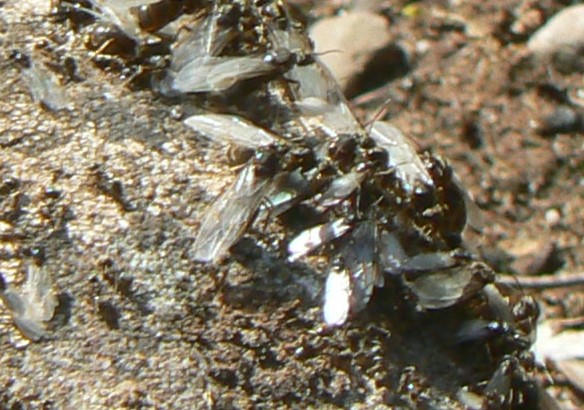
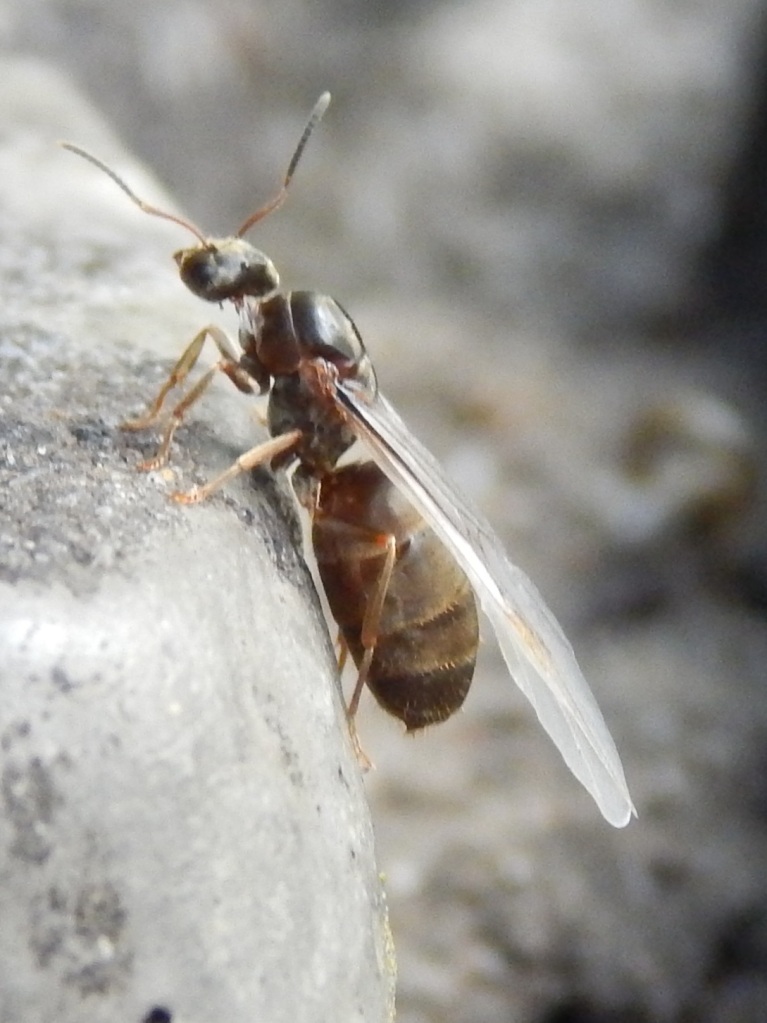

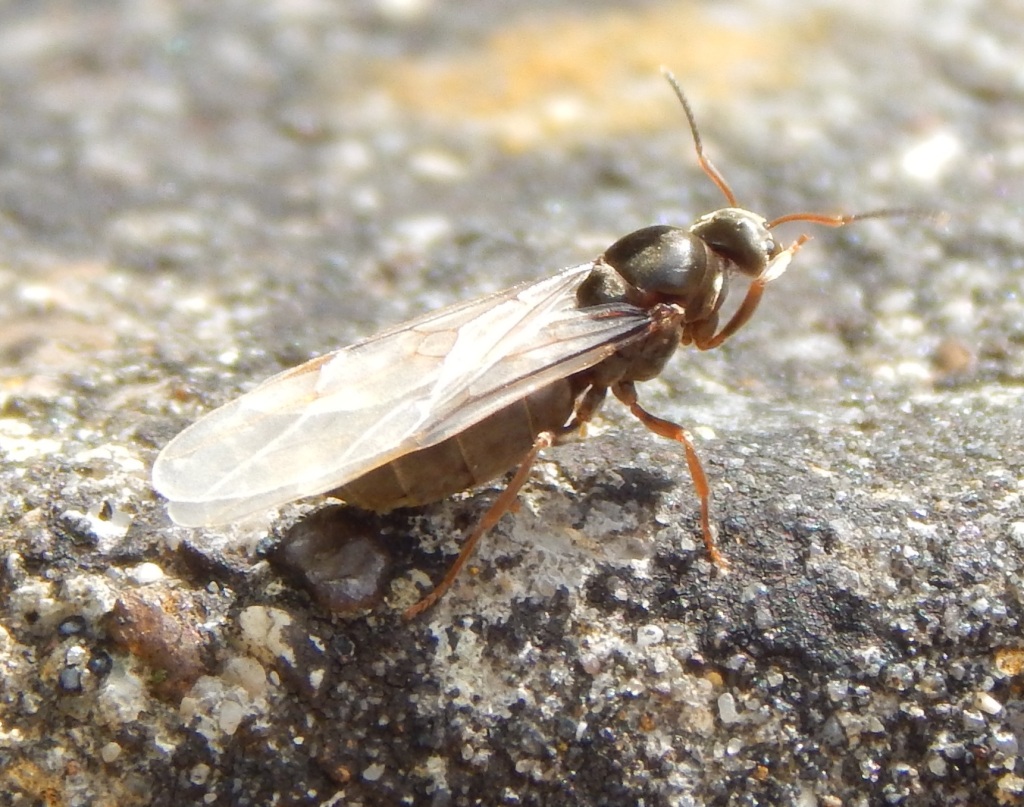
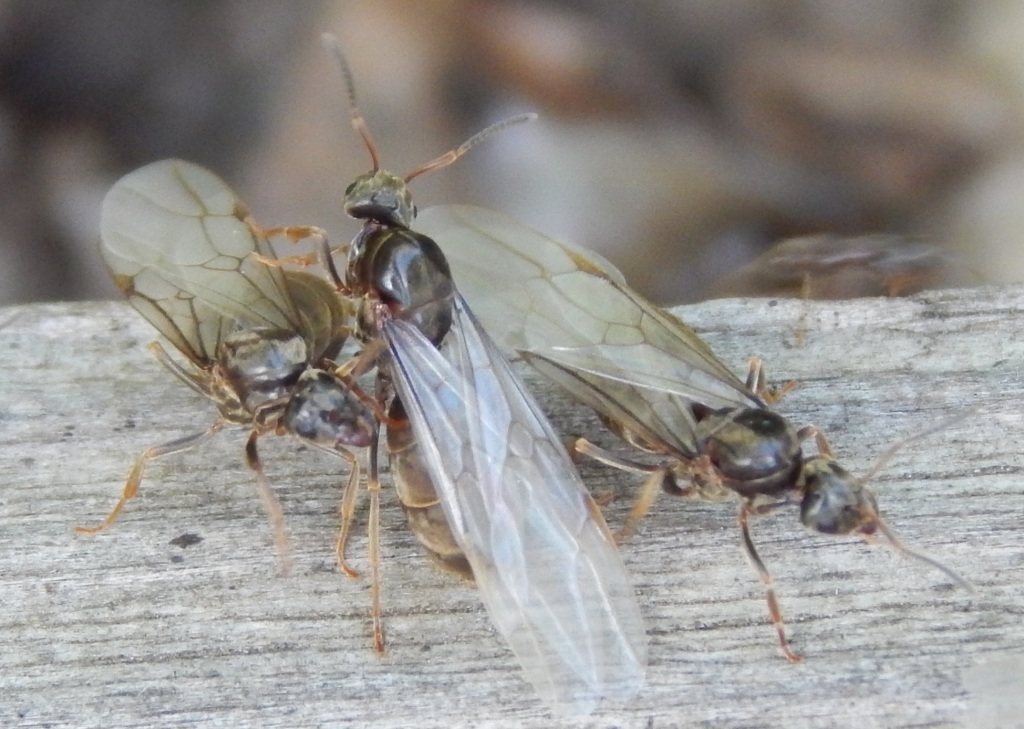
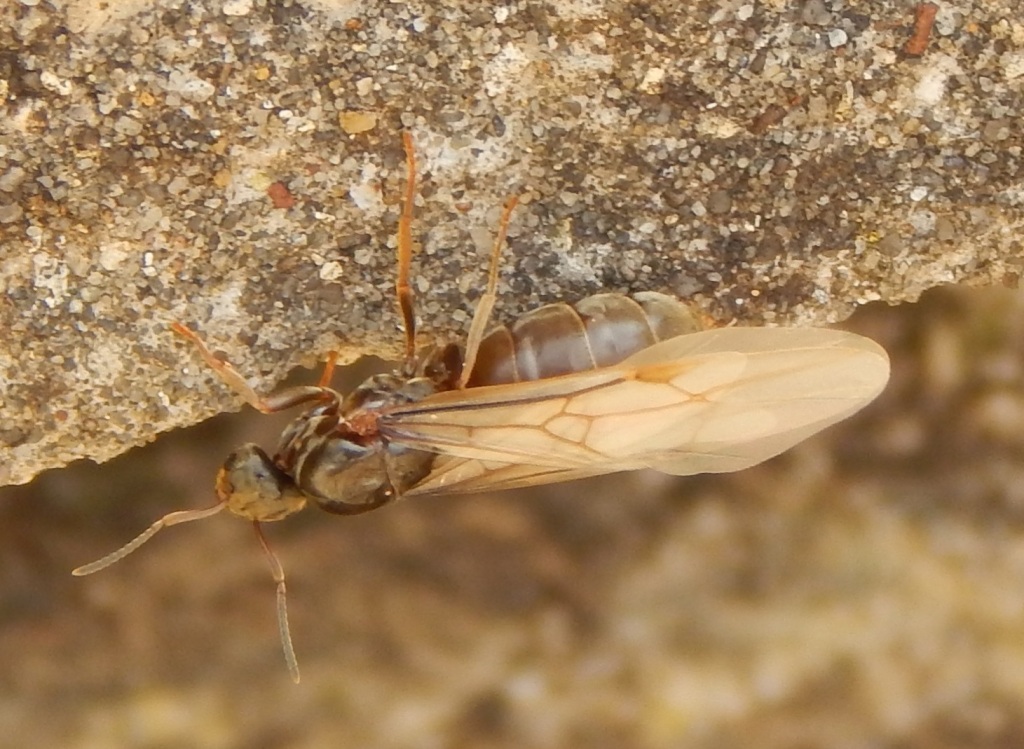
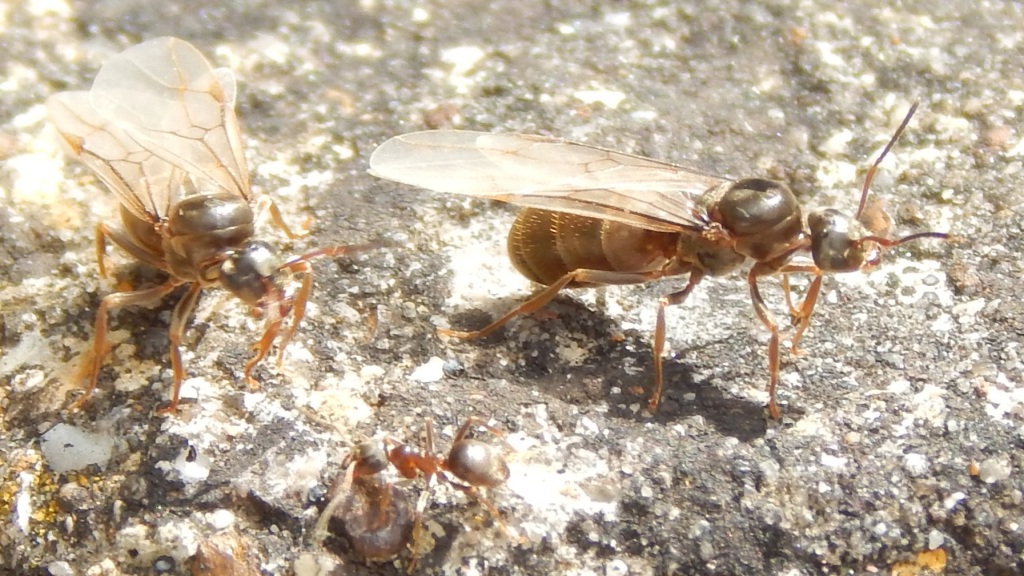
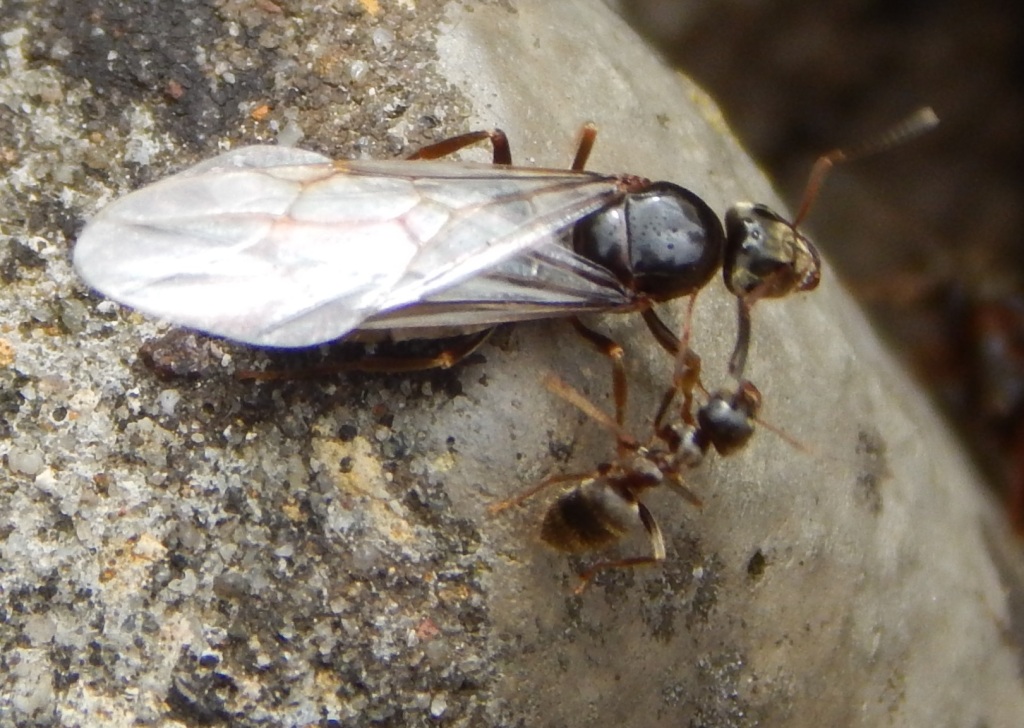
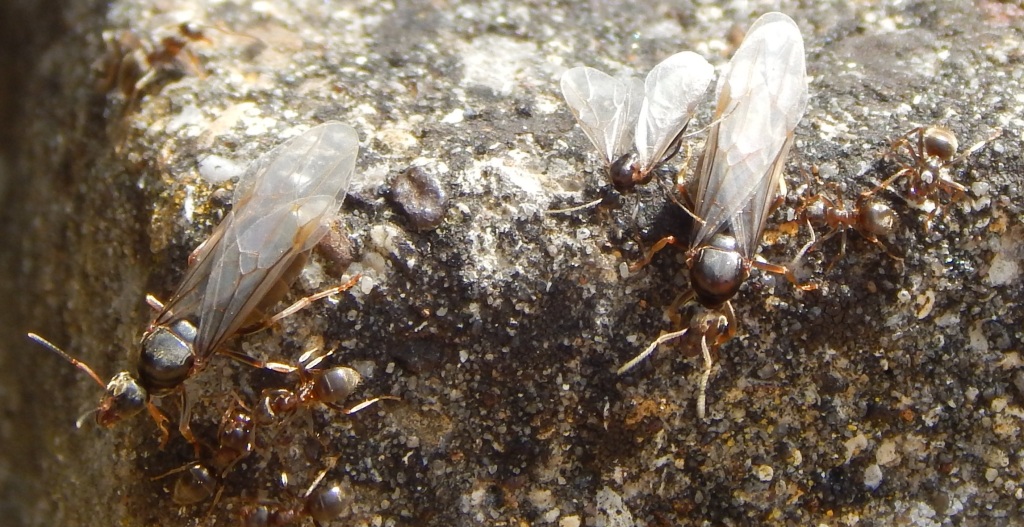
All these pictures show emerging queens accompanied in some cases by workers. Only the last picture shows a smaller winged male. I think the ratios are more even but the males generally emerge slightly earlier in the day.
They take flight and males mount the females before landing and mating. The queen can store enough sperm within her to last for life. After landing the ants break off their wings. The males die within about a day and the female new queen seeks somewhere to start a new colony.
She digs a tunnel to a small chamber, blocking the entrance. Then she lays a few eggs, which take about two months to hatch. During this time, she will not eat, absorbing protein from her wing muscles that die down. If desperate she may eat some of her eggs. The first few ants that come from her eggs are smaller and they will help her to set up the new colony.
Habitat
Lasius niger is found across Europe and parts of North and South America and Asia.
It is very common and widespread in Britain and by far the most common of our ant species in towns.
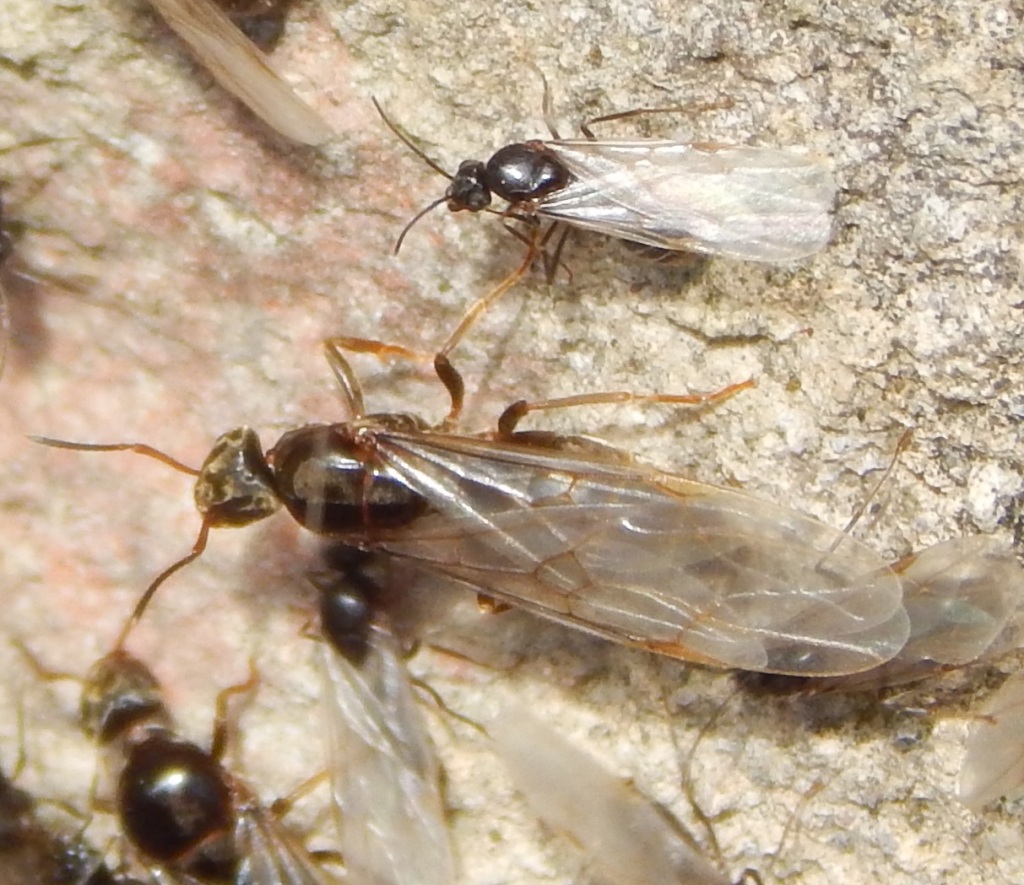
Other Notes
Ants eat almost anything especially if sweet so they can be regarded as pests in houses. It is, of course, of no use killing the offending ants unless you can find and destroy the colony.
I haven’t attempted to photograph any worker ants. Apart from being small they are always busy attending the needs of the colony. You won’t find an ant sitting and posing for photographs.
See also
In towns you may find Mymica rubra, Common Red Ants.
In the countryside you may see Formica Rufa, Wood Ants and Lasius flavus, Yellow Meadow Ants. Other species in the UK are much rarer.
